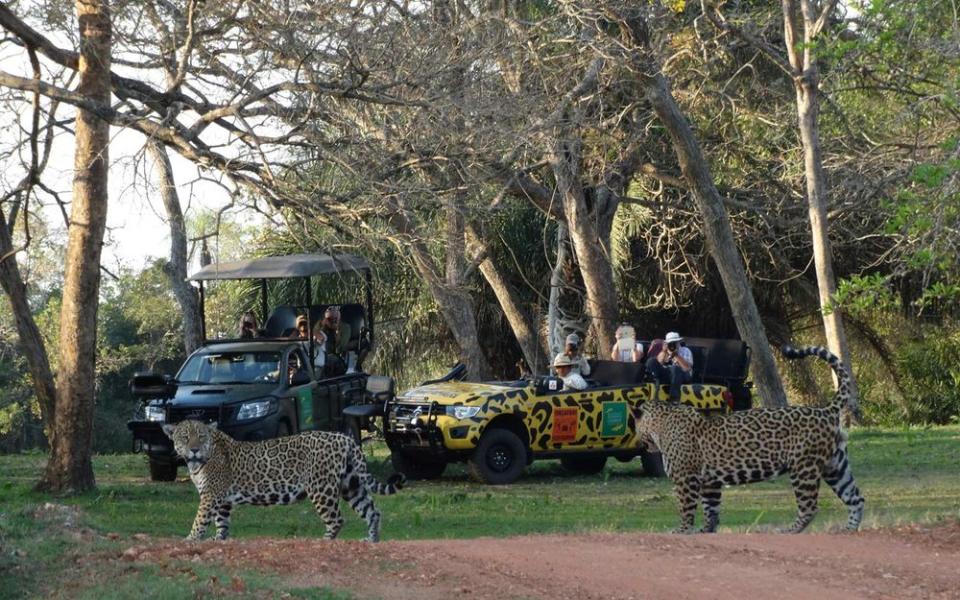Brazil Is Home to One of the Highest Concentration of Jaguars on the Planet — Here's How to See One From Your Hotel
A jaguar stepped onto the dirt road in front of us and approached our group slowly, the pads of her enormous feet moving inaudibly. Then, in one graceful swoosh, she flicked the tip of her tail and glanced over her shoulder before slinking into the underbrush.
It wasn’t even 8 a.m. and I’d already seen a wild jaguar. And you can too.
The mostly flat, seasonally-flooded Pantanal grasslands cover more than 81,000 square miles in Brazil, Bolivia, and Paraguay. According to Dr. Rafael Hoogesteijn, the Conflict Program Director for Panthera's Jaguar Program, there are nine jaguars per 40 square miles in Brazil’s Pantanal — one of the highest densities on the planet. Wildlife never comes with a guarantee, of course, but if you’re going to see a jaguar in the wild your chances are higher here than almost anywhere else on earth.
To further increase your chances of a sighting, visit during dry season (August–December), when the animals congregate around the few remaining water sources and less foliage makes for better visibility. Bed down at Refugio Ecologico Caiman, and you’ll have even better chances of locking eyes with one of these majestic cats. There are many hotels and lodges in the Pantanal, but only Caiman is located on its own nearly 14,000-acre private protected reserve and is home to its own jaguar conservation program.

Like most areas of the Pantanal, the land that Caiman was built on what used to be a cattle ranch (called a fazenda), where jaguars were viewed as pests because they preyed on the herd. Despite laws prohibiting the killing of jaguars, cattle ranchers in the Pantanal still hunt them. In 2004, the owners of Caiman decided to take action, dedicating about ten percent of their 130,000-acre property to conservation. The herds were removed, and the land naturally shifted back to habitat for jaguars. The population of big cats has since flourished: animals can be spotted year-round.
Jaguars are so common in the Caiman preserve that, for safety and mobility, most excursions are done in African-safari style vehicles. All excursions are led by a local guide (often a former cowboy) and a trained biologist.
When not out spotting jaguars, guests can relax in one of three luxurious lodges that comprise the Caiman property. Each small-capacity lodge has its own staff, kitchen, and pool. Large well-furnished living rooms and communal meals lend the feeling of staying in a chic house, while encouraging guests to recap the day’s adventures with other travelers.
One activity you won’t be able to do during your stay: go outside for a jog, unless you want to be chased down by a jaguar — an apex predator, might we add.
Despite the property’s many attractions, jaguars remain the big draw. During my time at the camp, I saw the same jaguar from before three more times from the safari truck, enjoyed a very rare (and heart pounding) sighting of a large male while hiking, and saw another unidentified individual during a night drive. And let me tell you: it never, ever got old.

